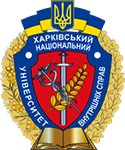Combating modern methods of legalisation (laundering) of the funds obtained by criminal means with the use of cryptocurrency
Abstract
The problems of combating corruption have not lost their relevance over the years. Tolerant attitudes to corruption as a way to quickly solve everyday problems give rise to new ways of developing illegal activities in various spheres of public life. At the same time, while fully condemning corruption as a means of illicit enrichment, the majority of the population still follows the old path. Consequently, the interests of individuals aimed at enriching themselves by any means, including illegal means, are becoming a counterweight to the development of society.
Money laundering remains a significant problem in the area of combating corruption. Unfortunately, the methods and means of carrying out illegal activities in order to conceal them and avoid responsibility for their commission are being updated on a daily basis. Successful money laundering requires high intelligence and an understanding of the processes of working with modern financial technologies. One of the areas of money laundering is the use of various types of cryptocurrencies and NFTs. The funds held by the offender go through a complex route before reaching their final destination. Illegally obtained funds introduced into the legal financial system in such a way as to avoid unnecessary questions about the origin of the money, through a significant number of transactions, are integrated into the financial system and can be used for any purpose.
The current state of research on the development of cryptocurrencies as a tool for money laundering is not sufficiently disclosed at the national level. Most of the scientific works are of foreign origin. The article is aimed at finding ways to improve the current anti-corruption legislation. The author outlines the main features of the development of money laundering schemes using cryptocurrency as an instrument of such schemes. The author defines the main definitional categories of such concepts as “cryptocurrency”, “NFT”, “smurfs”, “drops”, etc. The main shortcomings of the institutional and regulatory mechanism for detecting and investigating this category of offences have been highlighted, taking into account the use of modern financial technologies. The study may be useful in improving legislation in the field of corruption prevention.
Downloads
References
Baranovskyi, О. І., & Dudorov, О. О. (2005). Money laundering. In І. М. Dziuba, А. І. Zhukovskyi, М. H. Zhelezniak et al., Encyclopedia of Modern Ukraine. NASU Institute of Encyclopedic Research. https://esu.com.ua/article-34391.
Miralis, D. (2023). Bitcoin, corruption and the blockchain. Nyman Gibson Miralis. https://ngm.com.au/bitcoin-blockchain-and-corruption/.
Copyright (c) 2023 V. Р. Yatsenko, V. S. Bushyn

This work is licensed under a Creative Commons Attribution 4.0 International License.



